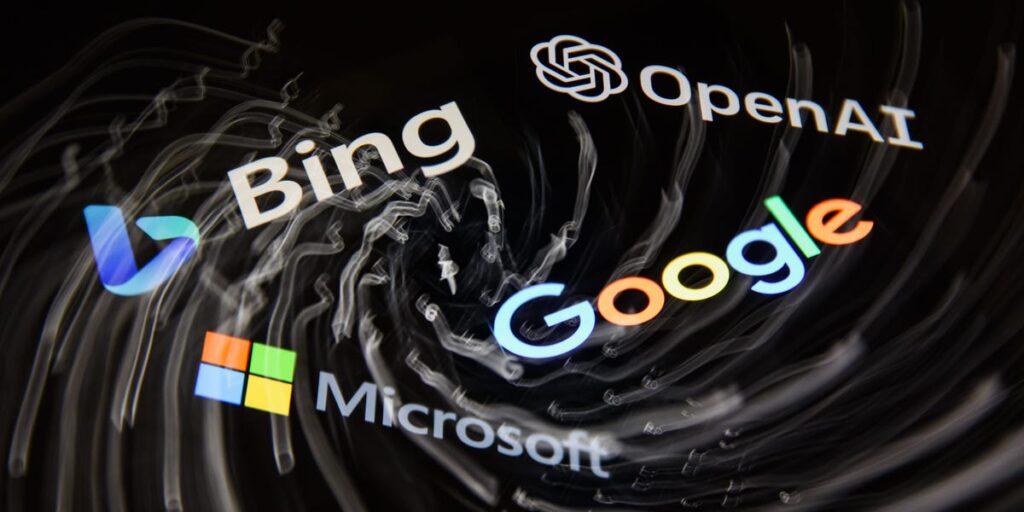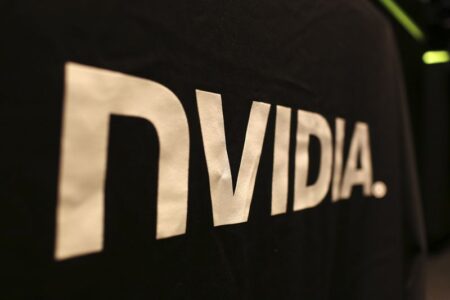Big Tech’s AI race is getting even hotter as Microsoft, OpenAI, and Google all announced some new features in May.
There seems to be a constant stream of new AI tools being released, leading to many names of chatbots and models to remember.
It doesn’t look like it will slow down anytime soon, either. Amazon, Microsoft, Google, Meta, and Apple are set to spend billions more on AI infrastructure, which will further boost their capabilities to roll out more products. With it comes more AI jargon.
Business Insider has compiled a guide to bring you up to speed on what AI products tech’s heavy hitters offer, and some of the times the rollouts haven’t gone to plan, so you know your AI lingo for those watercooler chats.
Here are some of Big Tech’s AI models and features that you need to know about.
Microsoft
Microsoft has a partnership with OpenAI, and it has invested billions in the ChatGPT maker, but it’s also reportedly building its own AI model that is separate from OpenAI’s.
The in-house AI model called MAI-1 is said to be trained using a public dataset and text from ChatGPT, a source told The Information. The project’s being overseen by Mustafa Suleyman, the recently appointed CEO of Microsoft AI, the report added.
The company has a text-to-image generator called Microsoft Designer, which launched last year after being tested in December 2022.
Shane Jones, a software engineer at Microsoft, wrote a letter to the Federal Trade Commission and Microsoft’s board about the image generator at the time to raise awareness about its potential risks, including the possibility it produces “harmful content.”
Microsoft researchers have also developed a text-to-video tool called VASA-1 that can bring still images to life. It was demonstrated in April, but it has not yet been rolled out to the public.
At the Microsoft Build developer conference in May, CEO Satya Nadella unveiled the company’s latest generative AI offerings, including updates to its AI chatbot Copilot. It also unveiled Team Copilot, a work-productivity tool that brings its AI agent to workplace chats and meetings within Microsoft Teams.
Another big AI feature revealed at the conference was Recall, which Microsoft likened to giving PCs a “photographic memory.” The feature takes screenshots of a user’s laptop every few seconds, which they can later search through.
OpenAI
OpenAI’s ChatGPT burst onto the AI scene in November 2022. Since then, it’s launched a few updated versions of its flagship model, including GPT-3, GPT-3.5, GPT-4, and GPT-4 Turbo.
Some users criticized the GPT-4 version as being a “lazier” and “dumber” model compared with earlier ones, in terms of its reasoning capabilities and other output.
OpenAI’s text-to-image generator is called Dall-E 3. It also has a video generator called Sora, which wowed many spectators when OpenAI dropped teaser videos in February that the tool generated. But it’s also been under scrutiny as Google boss Sundar Pichai said OpenAI might’ve breached YouTube’s terms of use by using its videos to train the model.
OpenAI revealed a multimodal model called GPT-4o in May, which is essentially a voice assistant that can carry out searches and act as a companion when doing work and other tasks.
GPT-4o already been a controversial release since it was unveiled earlier in May, as Scarlett Johansson spoke out and said the “Sky” voice for OpenAI’s chatbot was “eerily similar” to hers. She also said the company approached her to license her likeness for it. CEO Sam Altman responded by saying OpenAI never intended the “Sky” voice to resemble Johansson’s.
The company announced in July that it’s testing an AI search product called SearchGPT with a limited group of users. In September, OpenAI rolled out a new model called o1, which it says can reason like humans and outperforms previous models in complex tasks, especially in science, coding, and math.
Google’s AI chatbot is called Gemini and it was launched in March 2023.
The search giant paused Gemini from generating AI images of people
earlier in the year after it started producing historically inaccurate images.
Google then announced some new AI features at its I/O conference in May, including AI Overviews, an AI-generated summary of search results. Since it was rolled out, social media users have been posting their experiences of it generating inaccurate responses, including on one occasion where it told a user to put glue on pizza to keep the cheese intact.
A Google representative previously told Business Insider that such examples were “extremely rare queries and aren’t representative of most people’s experiences.”
In response to a Verge report that Google was manually deactivating some answers by its new AI search feature, a spokesperson told the outlet that Google was “taking swift action” to remove AI Overviews on certain queries.
Google introduced a text-to-video generator called Lumiere in January, but it has yet to announce a launch date.
Meta
Meta has an AI assistant called Meta AI, which is run on its open-source LLM called Llama. The AI tool is embedded into its platforms, including Instagram and WhatsApp. Meta’s video-generating tool, Make-A-Video, was announced in 2022.
It also has an AI image generator called Imagine, which launched in December and was trained on public Facebook and Instagram photos. In April, some users said it was racially biased because it could not create images showing mixed-race couples.
Amazon
Amazon’s reportedly building an LLM called Olympus to remain competitive in the AI race. It’s developing Olympus with the goal of embedding it into its online store and Alexa smart speakers, The Information reported last year.
Titan is Amazon’s image generator, and it is integrated into its service, Amazon Bedrock. This lets users access foundation models from players including Anthropic, Meta, Stability AI, and Cohere to build generative AI applications on Amazon Web Services, its cloud-computing platform.
Amazon committed to investing up to $4 billion in Anthropic last September. The startup, in which Amazon holds a minority stake, was cofounded by two former OpenAI employees.
Anthropic
Anthropic launched its first AI model, Claude, in March 2023. The San Francisco-based company released its latest model, Claude 3.5 Sonnet, in June 2024.
Anthropic claims it outperforms rivals on benchmarks such as math problem-solving and graduate-level reasoning.
The company said: “Improvements are most noticeable in tasks requiring visual reasoning, like interpreting charts, graphs, or transcribing text from imperfect images.”
Amazon, which is now offering the model through Amazon Bedrock, said the new model costs one-fifth of the price of Anthropic’s last model.
Read the full article here















